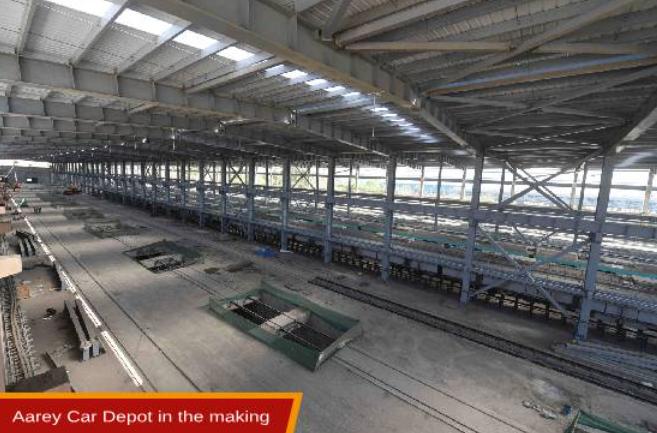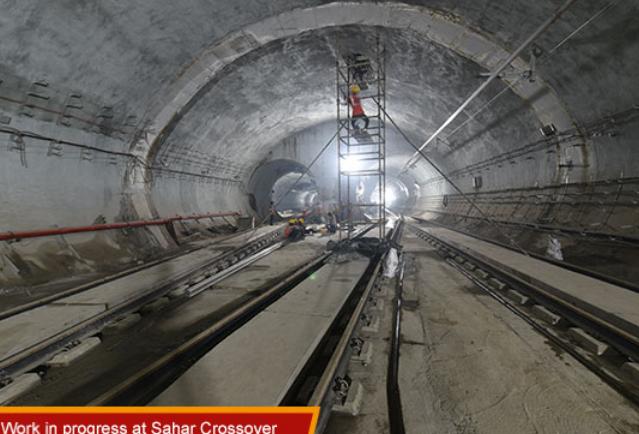



Table of Contents
- Introduction
- Latest News on Metro Line 3
- Mumbai Metro Line 3 Highlights
- Latest Status of Metro Line 3- Mumbai
- Extension Plans of Mumbai Metro Line 3
- Mumbai Metro Line 3 Stations
- Mumbai Metro Line 3 Route Map
- Interchange Stations in Mumbai Metro Line 3
- Images of Metro Line 3 Construction
- Mumbai Metro Ticket
- Ticket Fares
- Features of Mumbai Metro Line 3 Stations
- How Metro Line 3 Is going to benefit?
- Conclusion
- Faq's
Introduction
Mumbai Metro Line 3, also known as the Colaba-Bandra-SEEPZ Line or the Mumbai Metro Aqua Line, is a significant infrastructure project in Mumbai that aims to enhance the city's public transport system. This 33.5km metro line stretches from Cuffe Parade to Aarey Colony, providing commuters with a vital connectivity solution. The line is divided into two phases, with Phase 1 from Aarey Colony to BKC expected to start functioning by the end of 2023, and Phase 2 from BKC to Cuffe Parade to follow suit.
In this article, we will look at the latest update, route map, tickets, stations and more.
Latest News on Metro Line 3
The Mumbai Metro Rail Corporation Limited (MMRCL) began the integrated trial runs of underground Metro Line-3 (Colaba-Bandra-SEEPZ) Phase 1 on March 12. During the trial runs of the Mumbai Metro Line 3, various systems such as signal telecommunication, rolling stock (coach), and track traction are thoroughly validated. These trials were conducted between the Bandra Kurla Complex (BKC) and Aarey. Following the trial runs, officials must obtain certifications from individual systems and the Independent Safety Assessor (ISA) before presenting the system to the Commissioner of Metro Railway Safety (CMRS) for inspection and approval. Once operational, the Metro Line-3, the only fully underground metro in Mumbai, is expected to significantly enhance the city's transportation system. It is projected to serve 1.7 million passengers daily with a frequency of 3-4 minutes, accommodating around 2,500 passengers per train.
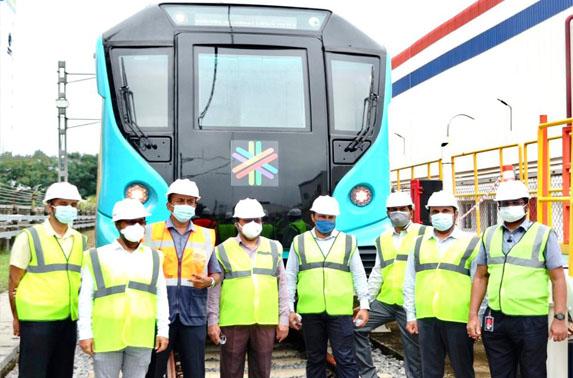 Source : https://mmrcl.com/
Source : https://mmrcl.com/
Mumbai Metro Line 3 Highlights
Name of Mumbai Metro Line 3 | Aqua Line |
Type | Underground |
Estimated Passengers | 17 Lakhs per day |
Status | Under Construction |
Financed By | Japan International Cooperation Agency (JICA) via ODA loan of Rs 12,235 crore |
Built By | 50:50 JV between Government of India and Government of Maharashtra |
Estimated Total Cost | Rs 23,136 crores |
Total Number of Stations | 27 |
Estimated Opening status | MMRC aims to open entire corridor by 2024 end |
Latest Status of Metro Line 3- Mumbai
The MML-3 underground corridor runs along the Colaba-Bandra-SEEPZ corridor for 33.5 kilometers. There will be 27 key stations along the corridor, of which 26 will be underground and 1 at grade.
Opening Status of Metro Line 3- Mumbai
The first phase of the Mumbai Metro Line 3, connecting Aarey Colony to Bandra Kurla Complex (BKC), is expected to be operational by April-May 2024. This phase will cover a 9.63-km stretch.
The second phase, linking BKC to Cuffe Parade, is anticipated to be operational by late 2024.
The project is currently 96% complete, with the remaining work focused on station aesthetics and final adjustments to accommodate the expected daily ridership of 1.7 million passengers.
The Mumbai Metro Line 3 will have a total of 27 stations, with 26 underground stations and one at-grade station.
Efforts are being made to ensure seamless integration of the Mumbai Metro Line 3 with the city's existing transport network, enhancing connectivity and accessibility for commuters.
In summary, the Mumbai Metro Line 3 is progressing towards completion, with the first phase set to be operational by mid-2024 and the full line expected to be operational by the end of 2024, significantly improving Mumbai's public transportation system.
Extension Plans of Mumbai Metro Line 3
The Mumbai Metro Line 3 expansion plans involve extending the underground corridor up to Navy Nagar, Colaba, encompassing a five-kilometer stretch in each direction. The Detailed Project Report (DPR) for this extension has been finalised by the Mumbai Metro Rail Corporation (MMRC) and is awaiting approval from the state government.
The decision to extend Metro 3 to Navy Nagar was prompted by a request from the Indian Navy office to the state government, aiming to benefit the densely populated area, including residential quarters for central government employees and others
The extension of Mumbai Metro Line 3 to Navy Nagar is expected to provide at least four more stabling lines, in addition to those planned at the eco-sensitive Aarey area.
This extension will help in accommodating the increasing capacity demands of the metro system and will be beneficial for the residents of Navy Nagar, who currently rely on other modes of transportation like BEST buses, personal vehicles, and taxis.
The project is anticipated to commence construction in 2025, following the completion and commencement of commercial operations of the existing Metro Line 3.
Mumbai Metro Line 3 Stations
The Mumbai Metro Line 3 route includes 27 stations, offering connectivity to key areas in Mumbai.
Sr. No. | Stations | Chainage (m) | Interchange |
1 | Cuffe Parade | 0.00 | - |
2 | Vidhan Bhavan | 1,438 | - |
3 | Churchgate | 2,204 | WR Suburban station |
4 | Hutatma Chowk | 3,095 | - |
5 | CST Metro | 3,910 | CR Terminus |
6 | Kalabadevi | 4,792 | - |
7 | Girgaon | 5,511 | - |
8 | Grant Road | 7,044 | WR Suburban Station |
9 | Mumbai Central Metro | 7,960 | WR Terminus, ST bus depot |
10 | Mahalaxmi | 9,056 | WR Suburban Station |
11 | Science Museum | 10,219 | - |
12 | Acharya Atre Chowk | 11,278 | - |
13 | Worli | 12,735 | - |
14 | Siddhivinayak | 14,292 | - |
15 | Dadar | 15,696 | - |
16 | Sitaladevi | 17,371 | - |
17 | Dharavi | 19,102 | - |
18 | BKC | 20,912 | - |
19 | Vidyanagari | 22,153 | - |
20 | Santacruz | 23,162 | - |
21 | Domestic Airport | 25,307 | - |
22 | Sahar Road | 27,016 | - |
23 | International Airport | 27,968 | - |
24 | Marol Naka | 28,981 | Metro Line 1 |
25 | MIDC | 30,161 | - |
26 | SEEPZ | 31,377 | - |
27 | Aarey Depot | - | - |
Source: https://mmrcl.com/
Mumbai Metro Line 3 Route Map
The 33km long corridor is connected at 8 different stops with Railways, MSRTC bus and Metro Line 2 B making is evident that it has been designed to make commuters life in Mumbai easier. Along with this, it is also the first and only fully underground metro corridor in India.
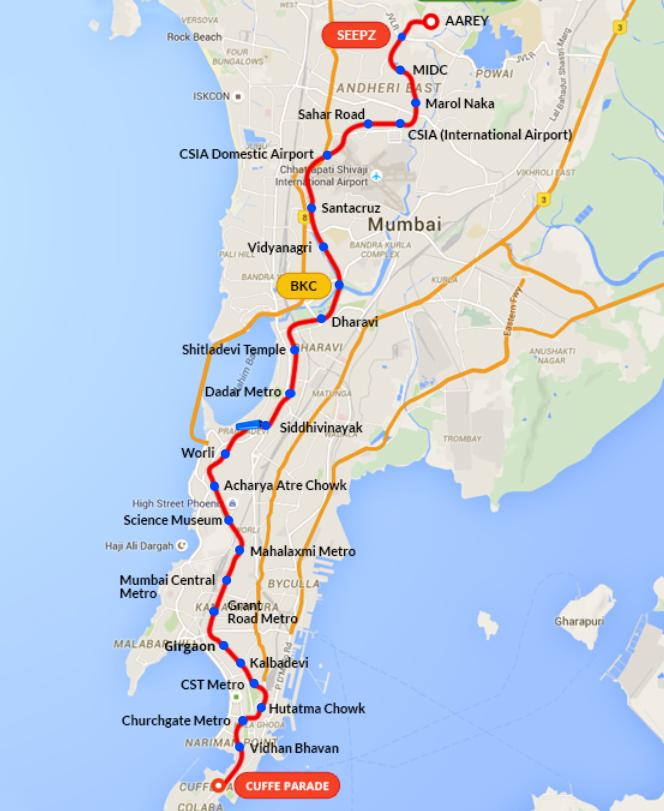 Mumbai Metro Line 3 Route Map
Mumbai Metro Line 3 Route Map
Interchange Stations in Mumbai Metro Line 3
The Mumbai Metro Line 3, also known as the Colaba-Bandra-SEEPZ Line, features several strategically located interchange stations that facilitate seamless connectivity with other modes of transportation.
Here are the interchange stations in detail:
Churchgate Station:
Interchange: Connects to the Western suburban railway line towards Virar and beyond.
How it helps: Provides a crucial link to the Western Line, enhancing connectivity for commuters traveling towards the western suburbs.
Mumbai Central Station:
Interchange: Connects to the Western suburban railway line towards Virar and beyond, and also to the National Rail Network for travel to cities across India.
How It Helps: Offers a vital connection to the Western Line and the national rail network, serving as a major transportation hub in Mumbai.
Mahalaxmi Station:
Interchange: Connects to the Western suburban railway line and the Mumbai Monorail.
How It Helps: Facilitates transfers between the Western Line and the Monorail, enhancing accessibility for commuters in the Mahalaxmi area.
CSMT Station:
Interchange: Connects to the Central suburban line towards Thane and beyond, the Harbour suburban line towards Panvel via Vashi, and to the National Rail Network.
Significance: Acts as a significant terminus for trains heading to various cities across India, providing a crucial link between different suburban lines and the national rail network.
Marol Naka Station:
Interchange: Connects to Line-1 of the Mumbai Metro, running between Ghatkopar and Versova.
Significance: Enhances connectivity between Line-3 and Line-1 of the Mumbai Metro, offering passengers convenient transfer options.
Income Tax Office (BKC) Station:
Interchange: Connects to Line-2 of the Mumbai Metro, running between Dahisar and Mankhurd via Bandra-Kurla Complex.
Significance: Provides a key link to Line-2 of the Mumbai Metro, facilitating smooth transfers for commuters traveling through Bandra-Kurla Complex.
These interchange stations play a crucial role in enhancing the connectivity of the Mumbai Metro Line 3, allowing passengers to switch between different modes of transportation efficiently and improving the overall travel experience in the city.
Images of Metro Line 3 Construction
Mumbai Metro Ticket
Note: There has been no news about the charges fixed for Metro Route 3 yet.
The Mumbai Metro offers a range of ticket options, including smart cards, paper QR tickets, mobile QR tickets, and WhatsApp e-tickets, catering to the diverse needs of commuters. The fare structure is distance-based, with slab-wise pricing to ensure affordability.
Smart Card
- An electronic card that can be obtained by paying a security deposit of ₹50.
- Can be used as a Store Value Pass or a Trip Pass.
- Store Value Pass allows you to load monetary value, which is deducted at the exit gate.
- Trip Pass is loaded with 45 or unlimited trips valid for 30 days.
Paper QR Ticket
- A pre-paid fare ticket for a single or return journey.
- Valid for one business day until the end of operations.
- Suitable for occasional metro users.
Mobile QR Ticket
- Allows commuters to book tickets online using apps like PayTm and PhonePe.
- Tickets are valid for 2 hours from the time of issue.
WhatsApp e-Ticket
- Commuters can book tickets through a simple 4-step process on WhatsApp.
- Receive a QR code on WhatsApp to be validated at the entry gates.
Ticket Fares
The Mumbai Metro fare structure is based on the distance traveled, with the following slab-wise pricing:
- 0-3 km: ₹40
- 3-12 km: ₹50
- 12-18 km: ₹60
- 18-24 km: ₹70
- 24-30 km: ₹80
- 30-36 km: ₹90
- 36-42 km: ₹100
- Above 42 km: ₹110
The Mumbai Metro also offers various pass options, including a 45-trip pass and an unlimited pass, to provide commuters with more flexibility and cost savings.
Features of Mumbai Metro Line 3 Stations
The Mumbai Metro Line 3 features several unique stations that cater to the diverse needs of the city's residents and commuters. These stations are strategically located to facilitate easy access and provide connectivity to various modes of transportation, including the suburban railway network, monorail, and other metro lines. Here are some of the notable features of the stations on the Mumbai Metro Line 3:
State-of-the-Art Escalators and Lifts: All stations on the Mumbai Metro Line 3 will be equipped with state-of-the-art escalators and lifts, ensuring easy accessibility for commuters with disabilities
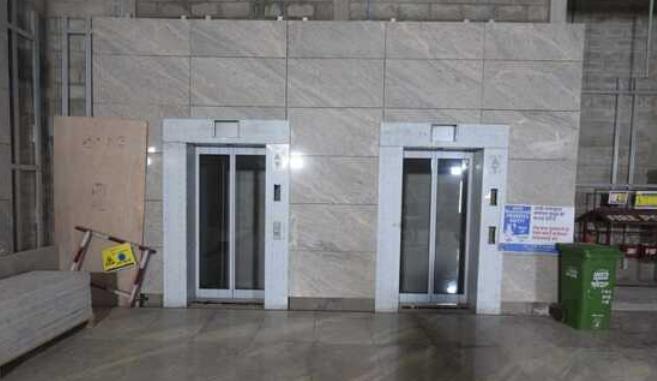 Source: https://mmrcl.com/
Source: https://mmrcl.com/
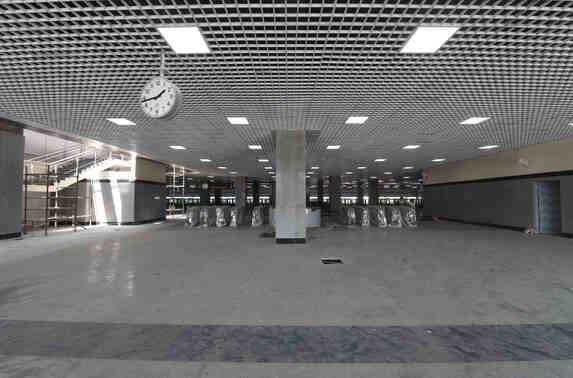 Source: https://mmrcl.com/
Source: https://mmrcl.com/
Platform Screen Doors and Emergency Evacuation Facilities: The stations on the Mumbai Metro Line 3 will feature Platform Screen Doors and Emergency Evacuation Facilities, enhancing safety and security for passengers
Source: https://mmrcl.com/
State-of-the art Tunnelling: The construction of the Mumbai Metro Line 3 faced several challenges, including tunnelling in complicated geology, below old, dilapidated buildings, and around congested neighbourhoods. The team of experts and engineers used latest technical know-how and engineering expertise to overcome these challenges.
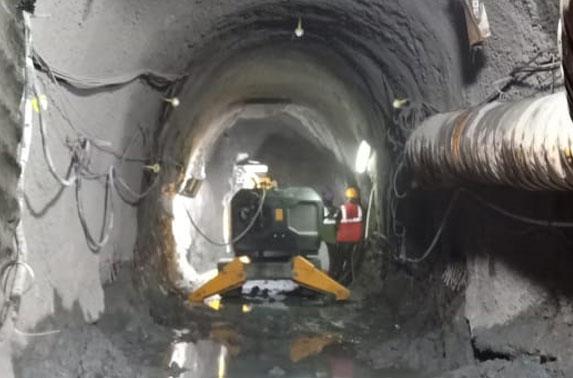 Source: https://mmrcl.com/
Source: https://mmrcl.com/
The Mumbai Metro Line 3 will connect six major business and employment centers, including Nariman Point, Cuffe Parade, Fort, Lower Parel, BKC, and SEEPZ/MIDC, enhancing accessibility and connectivity for commuters.
Easy Access to Educational Institutes, Hospitals, and Recreational Facilities: The line will provide easy access to over 30 educational institutes, 13 hospitals, 14 religious places, and over 30 recreational facilities, catering to the diverse needs of the city's residents
Integration with Other Modes of Transportation: The Mumbai Metro Line 3 will integrate with other metros, monorail, suburban rail, and ST bus services, reducing congestion on suburban railways by 15%4.
In summary, the stations on the Mumbai Metro Line 3 are designed to provide a seamless and efficient travel experience for commuters, with features such as state-of-the-art accessibility infrastructure, safety measures, and connectivity to major business and employment centers.
Also Read: Mumbai Metropolitan Region Development Authority (MMRDA)
How Metro Line 3 Is going to benefit?
The Mumbai Metro Line 3 is expected to bring numerous benefits to various areas of the city, transforming the urban landscape and improving the quality of life for its residents. The line, which spans 33.5 kilometers and connects key business districts like Bandra-Kurla Complex (BKC) and SEEPZ, is set to revolutionize public transportation in Mumbai
Benefits for Employees' Commute
The Mumbai Metro Line 3 offers significant advantages for Mumbai's workforce, including reduced travel time, reduced congestion, and improved accessibility. The metro provides a faster and more reliable commute compared to road-based transportation, potentially saving commuters hours daily. This can significantly improve work-life balance and productivity. By diverting passengers from road traffic, the metro eases congestion on arterial roads, leading to smoother commutes for everyone. The metro's network connects various business districts, making it easier for employees to reach their workplaces across different areas efficiently
Environmental Benefits
The underground Mumbai Metro Line-3 will bring in several environmental benefits, including a reduction in vehicular trips by 6.65 lakh/day and reduced fuel consumption of 3.54 lakh litres/day. The corridor will reduce 2.61 lakhs tonnes of CO2 emissions per annum. The metro will also reduce traffic on roads by 35% and noise pollution. Smart LED lighting systems with automatic light control features will reduce energy consumption, and the adoption of roof-mounted air conditioning with Variable Voltage Variable Frequency (VVVF) scheme will result in 4-5% energy saving
Benefits for Home Buyers
Homes close to the metro station have the advantage of metro connectivity and the Coastal Road and Worli Sewri Elevated Corridor. The metro will enable easy access to over 30 educational institutes, 13 hospitals, 14 religious places, and over 30 recreational facilities. It will also provide connectivity to areas that are not connected with suburban rail like Kalbadevi, Girgaon, and Worli. The metro will further integrate with other Mumbai Metro lines, Monorail, Suburban Rail, and ST Bus Services, and will also reduce congestion on suburban railways by 15 per cent
In summary, the Mumbai Metro Line 3 is a transformative infrastructure project that will bring numerous benefits to various areas of the city, including improved connectivity, reduced travel time, and environmental benefits. The line is expected to revolutionize public transportation in Mumbai, improving the quality of life for its residents and transforming the urban landscape.
Conclusion
Once fully operational, the Mumbai Metro Line 3 will be a crucial addition to Mumbai's transport network, catering to the needs of lakhs of daily commuters. The line is anticipated to significantly enhance connectivity, particularly with the commercial hubs in the city. The Aqua Line will integrate with various public transport locations, improving overall connectivity and accessibility for residents and visitors alike.
In conclusion, the Mumbai Metro Line 3 project represents a major step towards addressing Mumbai's transportation needs, offering a modern, efficient, and sustainable mode of travel for the city's residents. With its strategic route, well-placed stations, and potential to boost real estate development, the Aqua Line is poised to play a pivotal role in Mumbai's urban landscape.
explore further
Latest from Editorials
More from Publications
Resources
Dwello, for every home buyer, is a way to go from 'I feel' to 'I know', at no extra cost.

